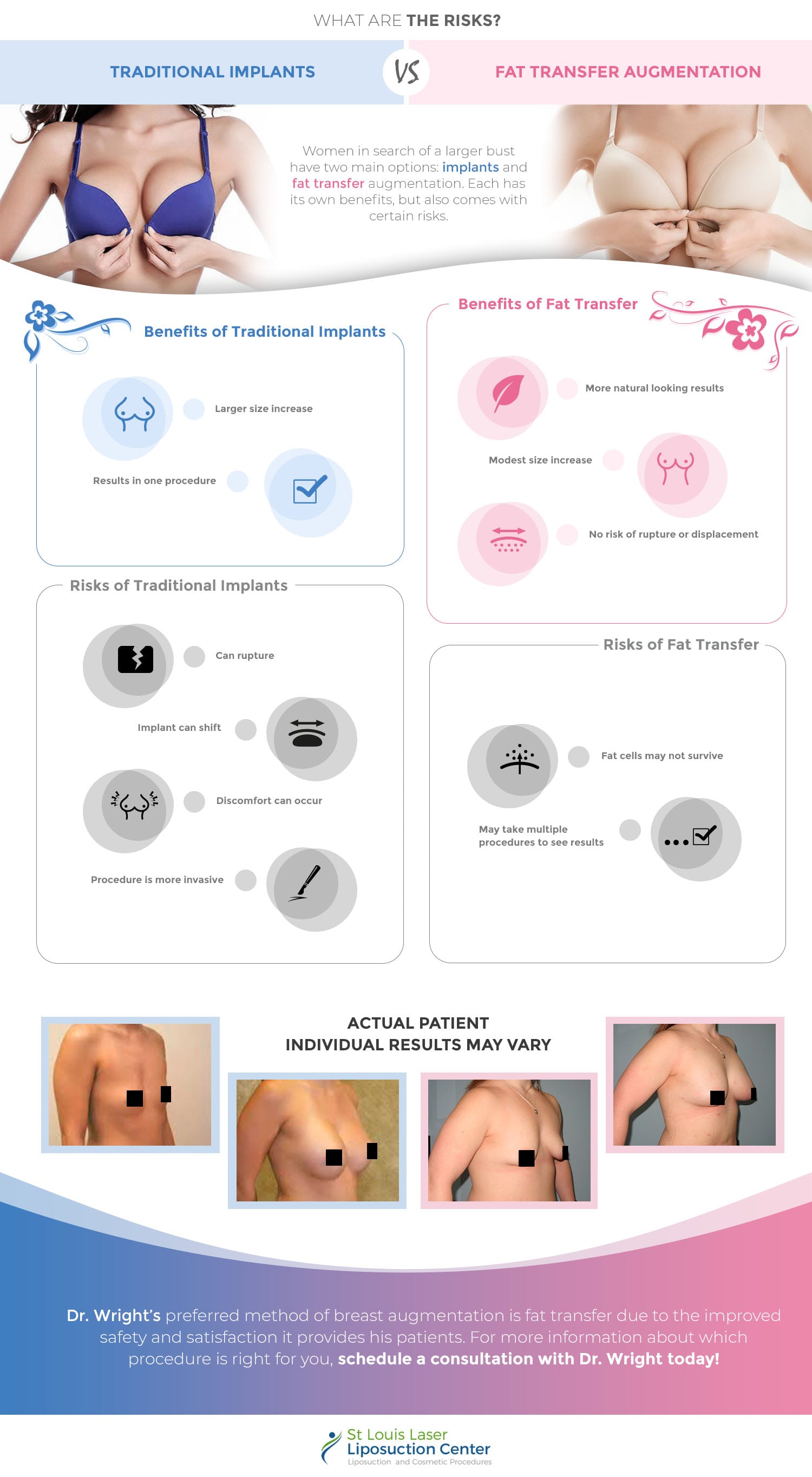Making the big decision to undergo a breast augmentation procedure can be tough enough as it is, but you may be surprised to find out that there are a variety of procedures to choose from. The top two procedures for breast augmentation usually come down to breast implants and fat transfer augmentations; each have their own set of risks that are expect for a surgical procedure. Here are some important facts to consider between the two procedures to help you decide which is best for you.
Breast Implants
Silicone breast implants can be considered one of the most commonly known breast augmentation procedures around. Not only can you choose from silicone implants, but there are also other varieties such as saline and gummy bear implants. Silicone implants have been the preferred choice for implants due to its realistic feel and look. Gummy bear implants are a specially designed silicone implant to maintain the shape and position for an even more natural feel and look. These implants continue to provide the best results around with cosmetic surgeons turning to them as their top choice for implants.
Implants are the preferable choice for those looking for a predictable outcome and a larger change in size. There are uncommon risks associated with breast implants. These can include the possibility of the implant leaking or bursting inside the breast, as well as contracture or scarring around the implant. Silicone implants, while generally safe, can cause a rare form of cancer Breast Implant-Associated Anaplastic Large Cell Lymphoma (BIA-ALCL). Additionally, this invasive procedure requires surgery that will result in scar tissue around the breasts. Any procedure that utilizes surgery will result in a substantial recovery period for the patient. Modern technology continues to minimize these risks as much as possible.
Fat Transfer Augmentation
Those looking for a “natural” breast lift might want to consider a fat transfer augmentation. This procedure uses fat tissue from other parts of the body to fill in the breasts. This procedure is perfect for those with extra fat that needs to be removed from another area, but can come up short for leaner patients. While this provides a more natural look, not all of the fat tissue will survive the procedure; in fact, some numbers indicate that only 50% of fat tissue survives the fat transfer augmentation procedure. This limits the cup size increase that can be achieved with fat transfer. While one benefit to fat transfer augmentation is you will not have to worry about any possible implants leaking or causing issues, you will still have uncertain results depending on the tissue that remains. The fat is implanted using a tiny needle puncture which very rarely leaves a scar, and the breasts recover more quickly than with a silicone or saline implant. Once again, modern technology continues to improve these techniques and reduce the exposure to any unwanted risks.
Which is the Better Procedure?
Both procedures offer different benefits and drawbacks. Ultimately, the better procedure will vary on a case by case basis. Contact Dr. Wright and his team of highly trained professionals at the St. Louis Laser Liposuction Center for a consultation to see which procedure is right for you.


